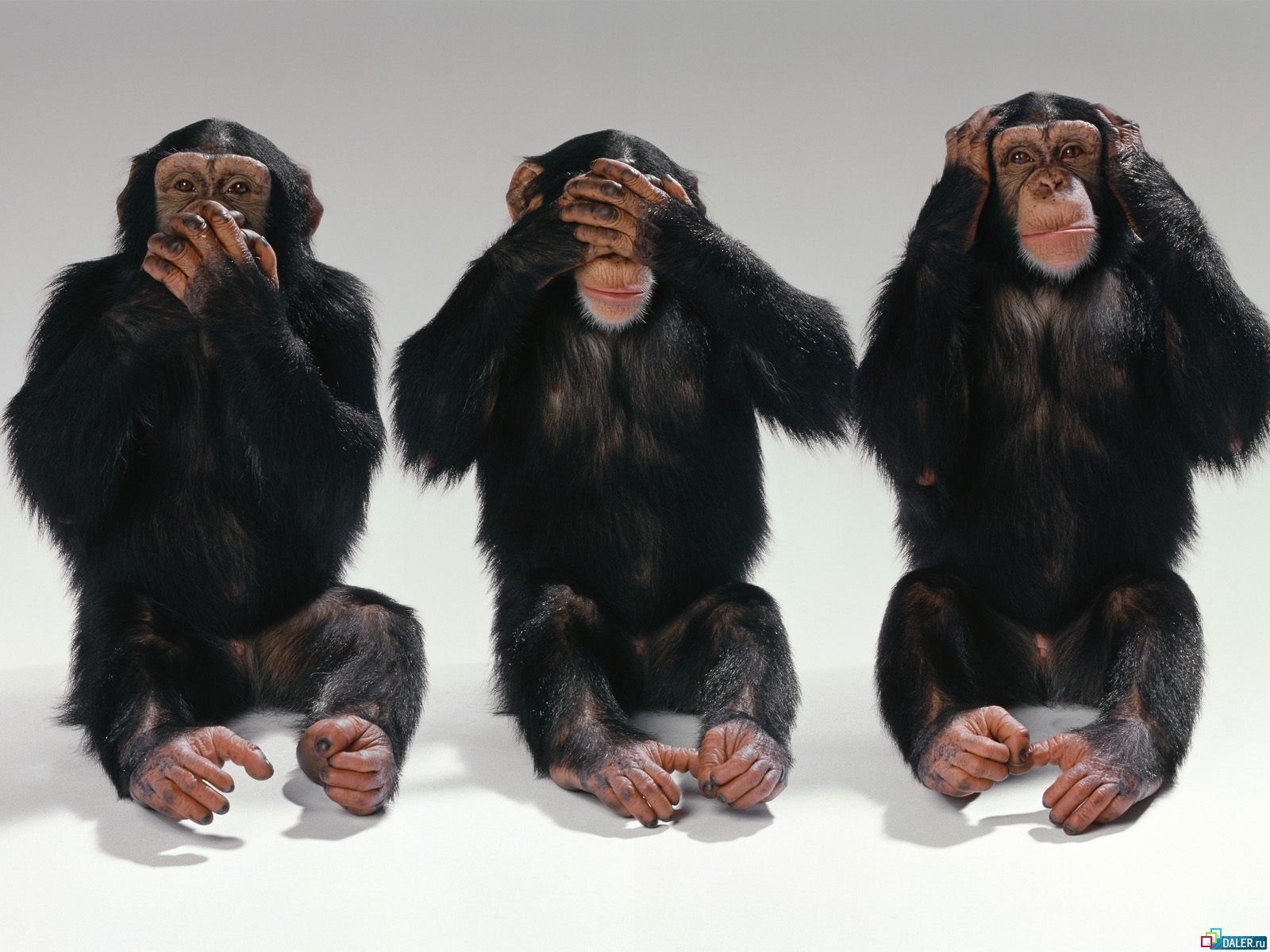Like humans, monkeys are able to guess what their relatives think

The intelligence of many primates is quite high - this is evidenced by the results of a large amount of research conducted by experts from different countries. Now it turned out that some monkeys can predict the actions of their relatives. Researchers studied chimpanzees, bonobos and orangutans. Primates of these species were also capable of empathy, empathy.
“These cognitive abilities are the basis for a large number of human social qualities. It seems to me that the results of our research suggest that monkeys understand each other much better than previously thought, ”says Christopher Krupenye of Duke University.
People are able to predict some actions and deeds of each other. For example, even a child is able to guess the act of a person who put some valuable object in the drawer, left the room, and then returned. If you ask the child what the person will do when they return to the room, the answer will most likely be: “Look in the drawer of the table.”
')
A significant part of human social life is built on the ability to model someone else's mental state. If a person did not know how to predict the thoughts and actions of other people, then neither empathy, nor the development of language abilities, nor much else would have been possible. Previously, people attributed the ability to predict actions exclusively to themselves. But now it became clear that it is not.
It is believed that the ability of a person to predict the actions of other people is divided into several steps. The maximum level is the ability to understand what the other person is wrong and to predict the consequences of any wrong actions of another person. Just a few years ago, scientists still believed that not only monkeys, but also children under 4 years old did not understand that other people could be wrong. But then it turned out that even two-year-old children are able to predict the actions of a person who is looking for the same chocolate bar in a place where it is no longer there (the delicacy was hidden up).
Christopher Krupenye and colleagues at Duke University, the Institute of Evolutionary Anthropologists of the Mac Planck Society and Kyoto University conducted several behavioral experiments with monkeys. The course of these experiments were recorded on a video camera. The plot of one of the experiments was as follows: a monkey (a made-up participant in the experiment) took some object from a person, and hid it in one of the boxes. At the same time, the person saw where the monkey placed the item. After that, the man was chased away, and the subject was hidden. Immediately, a man armed with a stick returned, chased the monkey and began to search for his thing.
A video recording of this experiment showed real monkeys: chimpanzees, bonobos and orangutans. When demonstrating a video, scientists tried to determine the direction of the monkey's gaze. For this purpose, special devices were used that helped track the direction of the animal's gaze. As it turned out, the vast majority of primates, who were shown a video of the experiment, looked at the box where the subject was initially placed. In their publication in Science, scientists showed that this means only one thing - the monkeys were waiting for the person who returned to the room to look into the drawer where his thing was originally. And the monkeys knew perfectly well that the subject in this box is no longer there.
“We wanted to ensure that the monkeys were really interested in watching the video. Monkeys are very social, so we decided to simulate a social conflict to attract the attention of primates, ” says Krupenie. “A man dressed as a monkey has become one of the strongest factors in attracting attention. Such a video may seem ridiculous to a person, but there is a strong social conflict, the development of which will be carefully monitored. ”
Previously, scientists conducted similar experiments, but in fact the food was necessarily involved - the strongest irritant for monkeys. Here, nothing edible was shown, and the experiment was thus "pure." The participants in the experiment just looked at what was happening on the screen. Attention to what is happening on the screen managed to attract due to the fact that the species of monkeys participating in the experiment are sensitive to social phenomena. Plus, thanks to modern technology, scientists have tracked the direction of the primate's gaze without any problems.
A similar experiment was also conducted with the children, the results of which were completely analogous to the results of the experiment with monkeys.
The results of the experiment with animals, according to the authors of the study, show the ability of monkeys to model someone else's mental state. Moreover, this ability, as mentioned above, is at the highest level of the ability to predict the actions of their relatives. Previously, other teams of researchers also conducted experiments that gave circumstantial evidence of the primates' ability to understand others, but only now scientists have received confirmation of this.
Source: https://habr.com/ru/post/398107/
All Articles